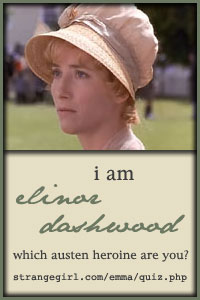
I was fascinated to find that the historical novel
Year of Wonders
by Geraldine Brooks, was inspired by the true story of the Derbyshire town of Eyams, during the “plague year” of 1665-6. Infected by a bolt of cotton brought from London, the town quarantined itself for the better part of a year, and though they suffered the loss of somewhere between 2/3 and 3/4 of their population, their sacrifice saved the surrounding towns and villages from decimation.
Geraldine Brooks was inspired by this true story to imagine life in the quarantined village over the plague year. And though a novel about the plague sounds inevitably depressing, somehow, as Brooks tells it, it’s not. Yes, there’s death and disease aplenty, but the story transcends this and becomes about the best and worst of human nature in the face of tragedy.
Eighteen-year-old Anna Frith is no stranger to tragedy before the plague strikes, having been abused by her father, and widowed and left with two young sons at seventeen. But as servant to the town’s minister, the charismatic Michael Mompellion, and his gentle wife Elinor, Anna has found people who value her, and Elinor even teaches her to read and write, something rare in a woman of Anna’s station.
Anna’s boarder, an itinerant tailor, brings plague to the village in a bolt of infected cloth. As disease begins to spread, the minister asks the people for an extraordinary act of sacrifice—instead of people running away, and possibly infecting surrounding towns, he wants the entire village to seal itself off in quarantine until the plague passes.
The town agrees to the quarantine, and the plague ravages the population. This brings out many of the townspeople’s baser instincts, and superstition, hatred, jealousy and violence begin to reign. But for some people, including Anna, the tragedy brings out strengths they never knew they possessed. And for Anna, it also gives her new skills, with which she ultimately reimagines her life.
Brooks evokes 17th century life, it’s customs and mores, with a skilled hand. Details about sheepfarming, lead mining, and herbalism feel well-researched, and add much to the atmosphere of the story. I also think Brooks’s characters are nuanced and powerfuly drawn. Anna is a well-realized character, and her journey is compelling, but there are times when her introspection, her thoughts about religion and human nature, seem beyond the ken of a 17th century woman.
I wanted Brooks to give me a little more on the decision about the quarantine. The minister, Mompellion, sways the villagers with an eloquent and compelling sermon, but once he has spoken, the townspeople decide to follow his plan fairly quickly, and the reader is not privy to anyone’s discussions, their arguments for and against, such a drastic move.
Reading this made me want to read Daniel Defoe’s Journal of a Plague Year, published in 1722, to get another account of life during this horrific epidemic.
Plague Fun Facts- The “Great Plague” was a huge outbreak of what is believed to be bubonic plague in England in 1665-1666. This outbreak was far smaller than the “Black Death”, which broke out in Europe between 1347 and 1353, and is thought to have killed 1/3 to 2/3 of Europe’s population. This plague outbreak was called “great” because it was one of the last big outbreaks in Europe.
- There were three major epidemics - in the 6th, 14th, and 17th centuries.
The death toll was 137 million victims.
- The outbreak in England in 1665-1666 was thought to have been brought to Britain by Dutch trading ships carrying bales of cotton from Amsterdam.
- Records state that deaths in London crept up to 1000 persons per week, then 2000 persons per week and, by September 1665, to 7000 persons per week. By late autumn, the death toll began to slow until, in February 1666, it was considered safe enough for the King and his entourage to return to the city. But by this time, trade with the European continent had spread this outbreak of plague to France, where it died out the following winter.
- The Great Fire of London seems to have helped stop the epidemic. After the fire, thatched roofs (which, besides being a fire hazard, also provided an ideal place for rats to live) were forbidden within the city, and remain forbidden under modern codes.
- Humans usually get bubonic plague from being bitten by a rodent flea that is carrying the plague bacterium or by handling an infected animal. Millions of people in Europe died from plague in the Middle Ages, when human homes and places of work were inhabited by flea-infested rats. Today, modern antibiotics are effective against plague, but if an infected person is not treated promptly, the disease is likely to cause illness or death.
- Bubonic plague causes fever and a painful swelling of the lymph glands called buboes, which is how it gets its name. The disease also causes spots on the skin that are red at first and then turn black.
- The disease struck and killed people with terrible speed. The time from infection to death was always less than one week—sometimes even just one day. The Italian writer Boccaccio said its victims often "ate lunch with their friends and dinner with their ancestors in paradise."
- The influenza pandemic of 1918-1919 was more deadly than bubonic plague—it killed 25 million people in the course of one year.






















